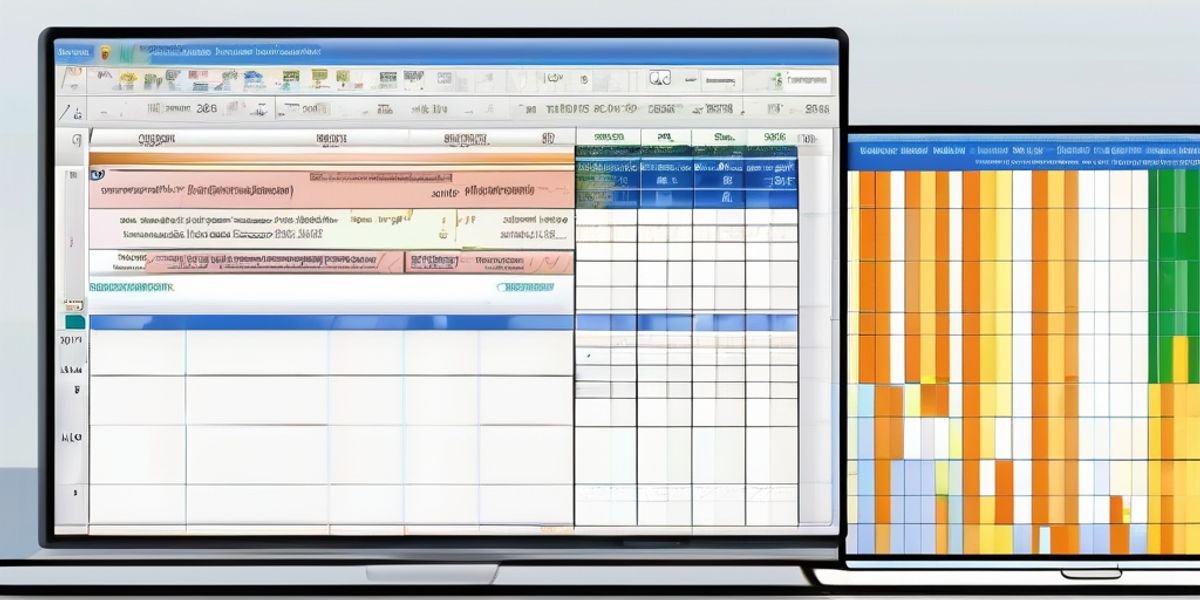Linear programming is a powerful tool for solving optimization problems in various fields, including operations research, engineering, and economics. By understanding the fundamentals of linear programming and leveraging software tools such as Excel Solver, LINGO, and Python libraries, professionals can efficiently find optimal solutions to complex problems. This article explores the essential concepts and practical applications of linear programming, providing insights into how to model, solve, and interpret the outcomes using different methodologies and tools.
Hire Experts from fiverr:
I will do operations research, linear programming using excel solver, lingo and python
I will do linear programming excel solver and operation research
I will do python base linear programming, operation research, data
I will operation research by using python, lingo, excel, gams, tora
Table of Contents
ToggleKey Takeaways
- Linear programming involves identifying mathematical relationships for objective functions and constraints, crucial for modeling optimization problems.
- Graphical methods provide a visual approach to solving linear programs, aiding in the understanding of feasible regions and optimal solutions.
- Excel Solver is an accessible tool for formulating and solving linear programs, with the ability to interpret various outcomes like infeasibility and unboundedness.
- LINGO software caters to advanced linear programming techniques, handling large-scale problems efficiently and supporting standard form representations.
- Python, with libraries such as PuLP, offers a flexible platform for operations research, enabling enhanced analytics and integration with linear programming.
Understanding the Fundamentals of Linear Programming
Identifying Mathematical Relationships for Objective Functions and Constraints
Linear programming is a mathematical concept that is used to find the optimal solution of the linear function. This method uses simple assumptions for modeling complex real-world problems. The core of linear programming lies in identifying the mathematical relationships that serve as the objective function or constraints. These relationships are typically expressed as linear equations or inequalities, reflecting the proportionality and additivity of the variables involved.
Graphical Representation of Linear Programs and Feasible Solutions
The graphical representation of linear programs is a powerful tool for visualizing the feasible region where all constraints are satisfied. It consists of linear functions that are limited by linear equations or inequalities. By plotting these on a graph, one can easily identify the feasible solutions that lie within the bounded area, known as the feasible region.
Interpreting the Feasible Region and Extreme Points
Interpreting the feasible region and its extreme points is crucial for understanding the potential outcomes of a linear program. The extreme points represent the vertices of the feasible region polygon, and any optimal solution will be found at one of these vertices. This is a prominent technique for discovering the most effective use of resources, as it allows for the evaluation of all possible solutions within the feasible region.
Solving Linear Programs Using Graphical Methods
Creating Graphs for Objective Functions and Constraints
The graphical method is a pivotal technique for solving two-variable linear programming problems. The first step is to identify the decision variables, typically denoted by x and y. Once the variables are defined, the objective function and constraints are translated into linear equations. These equations are then graphed on a coordinate system, where each line represents a constraint, and the direction of optimization is indicated by the objective function.
Finding Solutions within the Feasible Region
After graphing the constraints, the next step is to determine the feasible region, which is the area where all constraints overlap. Solutions to the linear program are found within this region. It’s important to note that optimal solutions occur at one of the vertices, or extreme points, of the feasible region. By examining these points, one can identify the best solution that maximizes or minimizes the objective function.
Analyzing Results and Interpreting Graphical Solutions
Once the feasible region is established, the final step involves analyzing the results. This includes identifying binding, nonbinding, and redundant constraints, as well as calculating slack or surplus variables. The graphical method allows for a visual interpretation of the solution, making it easier to understand the relationships between variables and constraints. By interpreting the graphical solutions, one can make informed decisions based on the model’s outcomes.
Formulating and Solving Linear Programs in Excel
Welcome to my gig! If you’re looking for professional assistance in Operations Research and Linear Programming, you’ve come to the right place. I specialize in providing high-quality solutions using Excel Solver, LINGO, and Python.
Modeling Linear Programs with Excel Solver
Excel Solver is a powerful tool that can handle various optimization problems, including linear programming. To model a linear program in Excel, you need to:
- Define the objective function.
- List all the constraints.
- Set up the Excel spreadsheet with your model.
- Use the Solver add-in to find the optimal solution.
I will do operations research, linear programming using excel solver, lingo and python
I will do linear programming excel solver and operation research
The process is straightforward: Go to the data tab and click solver to open the Excel Solver.
Interpreting Outcomes: Optimal Solutions, Infeasibility, and Unboundedness
When using Excel Solver, you may encounter different outcomes:
- A unique optimal solution
- Alternative optimal solutions
- Infeasibility
- Unboundedness
It’s crucial to understand what each outcome means for your linear programming model and how to interpret the results effectively.
Case Studies: Applying Excel Solver in Real-World Scenarios
Excel Solver has been applied in numerous real-world scenarios, such as workload balancing, production strategy, and venture capital investment. These case studies demonstrate the practicality and versatility of Excel Solver in solving complex linear programming problems.
Advanced Linear Programming Techniques with LINGO
Writing Linear Programs in Standard Form
When using LINGO software, it’s essential to write linear programs in standard form to ensure clarity and consistency. This involves expressing the optimization problem with all variables on one side and all constants on the other, typically with constraints in inequality form. Here are the steps to convert a linear program into standard form:
- Ensure all variables are non-negative.
- Convert all inequalities to equalities using slack, surplus, or artificial variables.
- Express the objective function clearly, separating the decision variables and the constant term.
Handling Large-Scale Problems: From Hundreds to Thousands of Variables
The power of LINGO lies in its ability to handle large-scale problems efficiently. With the capability to manage problems with thousands of variables and constraints, LINGO stands out among other optimization tools. The table below showcases the scalability of LINGO:
| Problem Size | Variables | Constraints |
|---|---|---|
| Small | 100 – 500 | 50 – 200 |
| Medium | 500 – 2,000 | 200 – 1,000 |
| Large | 2,000+ | 1,000+ |
Exploring Commercial and Free Linear Programming Software
While LINGO is a robust commercial option for linear programming, there are also free alternatives available. It’s important to compare features, such as the solving of stochastic and linear problems, and the availability of in-built solvers. Some leading commercial packages include CPLEX, Gurobi, and MOSEK, alongside LINGO. Free options like Clp (COIN-OR linear programming), the lpSolve package for R, and the PuLP library for Python are also worth exploring for those on a budget or requiring open-source software.
Leveraging Python for Operations Research
Python has become an indispensable tool in the field of operations research and industrial engineering, offering a rich ecosystem of libraries and tools designed to solve complex optimization problems. With Python, professionals can model, analyze, and solve linear programming challenges efficiently.
Utilizing Python Libraries: PuLP and Other Tools
Python’s open-source libraries, such as PuLP, provide a powerful platform for formulating and solving linear programming problems. These libraries are equipped with a user-friendly interface and can seamlessly integrate with other Python packages for data analysis and visualization.
Integrating Python with Linear Programming for Enhanced Analytics
The integration of Python with linear programming techniques allows for enhanced analytics and deeper insights into optimization problems. Python’s flexibility in handling data and its ability to perform complex calculations make it a valuable asset in operations research.
Case Examples: Python in Action for Optimization Problems
Python’s practical application in solving real-world optimization problems is well-documented through various case studies. These examples demonstrate Python’s capability to optimize tasks in diverse industries, from logistics to finance, showcasing its role as a versatile tool in industrial engineering.
Welcome to my gig! If you’re looking for professional assistance in Operations Research and Linear Programming, you’ve come to the right place. I specialize in providing high-quality solutions using Excel Solver, LINGO, and Python.
I will do operations research, linear programming using excel solver, lingo and python
I will do linear programming excel solver and operation research
Conclusion
In this comprehensive exploration of linear programming and operations research using tools like Excel Solver, LINGO, and Python, we have traversed the landscape of optimization and decision-making. From formulating linear programs in standard form to interpreting the myriad outcomes of their solutions, we have equipped ourselves with the knowledge to tackle complex problems. The power of Excel Solver for accessible optimization, the robustness of LINGO for large-scale applications, and the versatility of Python with libraries like PuLP for customizable solutions, all demonstrate the vast potential of these tools in various scenarios. Whether it’s dealing with thousands of variables or interpreting the nuances of binding constraints, the insights gained here will undoubtedly enhance our ability to make informed, strategic decisions in the competitive business environment.
Frequently Asked Questions
What is linear programming in operations research?
Linear programming is a mathematical method used in operations research to find the best possible outcome, such as maximum profit or lowest cost, in a mathematical model whose requirements are represented by linear relationships.
How can Excel Solver be used for linear programming?
Excel Solver is a built-in optimization tool in Microsoft Excel that can be used to solve linear and nonlinear models. It allows users to define an objective function, set up constraints, and find an optimal solution by varying decision variables.
What is LINGO and how is it used in linear programming?
LINGO is a comprehensive tool designed to make building and solving linear, nonlinear (convex & nonconvex), quadratic, quadratically constrained, second order cone, stochastic, and integer optimization models faster, easier and more efficient.
Can Python be used for linear programming, and if so, how?
Yes, Python can be used for linear programming by utilizing libraries such as PuLP, which provides a user-friendly interface to construct optimization problems and solve them using various solvers.
What are the possible outcomes of solving a linear program?
The possible outcomes when solving a linear program include finding a unique optimal solution, alternative optimal solutions, infeasibility (no solution satisfies all constraints), and unboundedness (the solution can be infinitely large).
What are some real-world applications of linear programming?
Real-world applications of linear programming include resource allocation, production planning, transportation scheduling, network flows, portfolio optimization, and many other decision-making scenarios in business and engineering.






